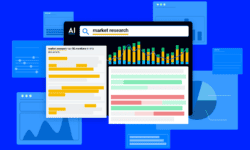Two things were happening simultaneously in New York City all through June. The first was fireworks. Every night, every neighborhood, every street. With all the Independence Day ceremonies canceled, pyrotechnics got so cheap they started falling off the backs of trucks. Without warning, the kids on your block were running around with reloadable mortars branded as Assault Squad, Aerial Arsenal, and Boom Shockalocka.
The other thing was the Wall Street rally. All the restaurants and bars in town were closed, but the New York Stock Exchange’s (largely ceremonial) trading floor was (partially) reopened. In the early days of the Age of COVID, Big Board traders were putting the “panic” in “pandemic.” So maybe it’s a stretch to say that equities became undervalued, but they were underpriced compared to where they were at the end of March. Suddenly, the guy at the deli counter who always gives you the wrong change is making a fortune on such obscure ticker symbols as ADSK, ANSS, and SNPS.
Both these emblems of early summer 2020 are likely to end in much the same way. Badly.
Takeaways
- The prospects for stocks are down, despite any positive day, week, or even month
- If stock prices manage to keep defying gravity, it could only be because they’ve lost all connection to the economy as we know it, as defined by gross domestic product, employment and the primacy of the consumer
- Economic data in the time of coronavirus is hard to compare against that from before the pandemic so, for now, it has little predictive value; even so, things aren’t looking good
Equities
The S&P 500 continued to rebound, adding 1.99% on a total return basis in June, or 21.15% for the second quarter. While a win is a win, last month’s advance reflects an order-of-magnitude slowdown compared with the quarterly gain. But wait, it gets worse. From the June 8 market peak, the index fell 5.25% by the end of the month. For the first half, the S&P – assuming dividend reinvestment – was down 3.08% since New Year’s Day.
The CBOE VIX market volatility index closed the month at 30.43. That’s not a great reading, but let’s keep it in context. While it’s true that, pre-pandemic, the VIX was bouncing around the low teens for the previous five years, it’s also true that it peaked at an unprecedented 83.56 on March 15. So the direction is more important than the actual reading. We’re certainly far less panicky than we were on that first weekday of the shutdown, but are we less panicky than we were a month ago? No. Over the course of June, the VIX rose 10.61%.
Abroad, Germany’s DAX gained 6.25% in June and 25.42% in the second quarter, but slumped 7.08% in the first half overall. Britain’s FTSE 100 one-, three- and six-month moves were up 1.53%, up 10.89%, and down 18.20%, respectively. Japan’s Nikkei 225 results were similarly up 1.02%, up 17.82%, and down 5.78% in the same periods.
Shanghai’s SSE Composite improved 4.64% in June and 8.52% for the quarter but fell 2.15% over the first half. The Hang Seng index of Hong Kong – which on top of everything else also has to deal with Beijing upping the pressure – rose 6.38% for the month and 3.49% for the season, while losing by 13.35% at halftime.
So don’t be fooled by May’s optimism and June’s sense of denial. As we recently noted, a “Moving Average Convergence/Divergence oscillator shows that the 12-day average for the S&P has been steadily below the 26-day for weeks, suggesting that sentiment is bearish, no matter how frothy the stock market recovery appears on its surface.”
Fixed income
CNBC.com ran an article headlined, “The bond market appears to be signaling the worst is over for the economy.” A month ago. Good times.
After the June 30 close, at the end of what reporter Sunny Oh described as “a listless month,” MarketWatch reported that the yields moved down 0.4 basis points on the two-year note, up 0.3 basis points on the 10-year and up 0.3 basis points on the 30-year bond in June.
The first-half numbers, though, might leave you begging for “listless.” Yields have been crashing since mid-January. Between the start of the year and June 30, the two-year yield has descended from 1.58% to 0.17%, while the 10-year and 30-year moved in parallel from 1.88% to 0.69% and from 2.33% to 1.43%, respectively.
While the spreads have notched up a bit over the year, there’s not much room for any Treasury obligation to fall from here. The takeaway is that the yield curve could be heading toward another inversion – not a freak occurrence which quickly corrected itself, like what happened in March 2019 – but an actual disincentive to invest.
Monetary policy
Don’t be surprised if the Federal Reserve steps in and takes some corrective action to keep that yield-curve inversion from happening or, more likely, to mitigate the ill effects.
After all, this has been a creative time for the Fed – and “creative” isn’t always a compliment for central bankers. The Board of Governors has followed the lead of their colleagues at monetary authorities around the globe who have pursued expansionary policies to contain the economic damage done by the pandemic.
That includes the drastic step of buying junk bonds. The Fed is currently buying high-yield corporate securities providing they were rated investment grade on or before March 22. Investopedia reports there are almost 800 of those.
Commodities
Oil prices improved 10.65% in June, as West Texas Intermediate crude settled at $39.27 per barrel. That follows May’s astonishing 88.4% improvement. Another ten bucks a barrel, and the energy companies will start breaking even. WTI ended the first half down 35.69% from 2019’s final trade.
Gold advanced 2.9% in June, continuing a steady trend, ending the month at $1,801 per ounce. If you bought some on New Year’s Eve, then your stake appreciated 18.21% in six months.
Despite all the volatility elsewhere in the markets, foreign exchange markets have been oddly muted. The euro improved +1.2% against the dollar in June while the British pound rose 0.4% and the Japanese yen dipped 0.1%.
Even Bitcoin had a fairly staid month, ending June at $9,145, a gain of 5.6%.
US Economy
The Bureau of Economic Analysis’s final estimate of first-quarter gross domestic product confirms that the U.S. economy contracted 5.0% in the first quarter. Although the overall reading is the same as the previous estimate, what’s telling is that, despite upward revisions to other factors, personal consumption turned out to be lower than the Commerce Department thought. That’s the same personal consumption which accounts for 70% of GDP.
Consumer sentiment is becoming less and less relevant. According to the University of Michigan, it’s still improving, even as nothing else is. From May to June, the index improved 8.0% to 78.1%. Is that a measure of our sentiment or consumer IQ? Hey, American consumer, do us all a favor: Spend $1.50 and buy a freakin’ mask.
Everywhere in the U.S., unemployment rates were higher in June than a year, says the U.S. Bureau of Labor Statistics (to no one’s surprise.) The national unemployment rate, though, dropped 2.2 percentage points to 11.1%, not seasonally adjusted. This followed May’s unexpectedly steep drop in the jobless count. These numbers are, of course, baloney, and should not have driven a new stock market surge, which saw the Dow Jones Industrial Average jump 350 points Tuesday morning before news of the speed of the virus’s spread added a modicum of solemnity to the trading day.
Total nonfarm payroll employment rose by an unexpected and unprecedented +2.5 million in May, BLS had earlier reported, when the consensus among economists was for a loss of 7.5 million jobs, on top of April’s 20.7 million. These gains in the labor market, to the extent they’re real, reflected a limited resumption of economic activity that’s already fading from memory. To the extent they’re not real, they reflect confusion about the parts of the idled workforce, which now comingles work-stopped giggers and self-employed contractors along with temporarily and permanently laid-off employees.
William Freedman, MBA, writes about finance and technology. He serves on the board of governors of the New York Financial Writers’ Association.
For more expert analysis, head to our resources page. To access company documents, including SEC filings, earnings call transcripts, and more, unlock free trial access to AlphaSense or log into your account.




